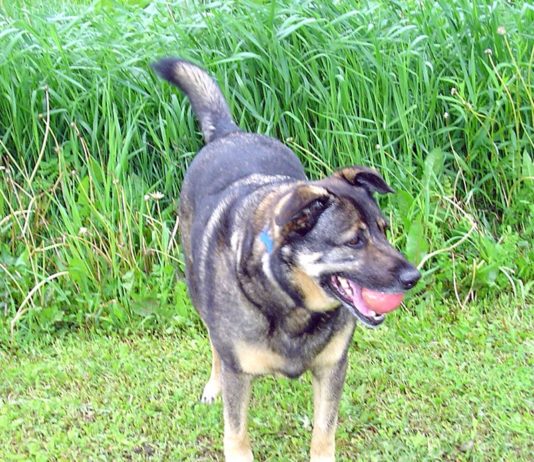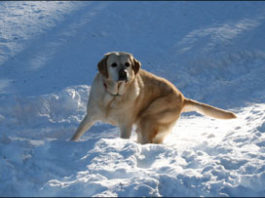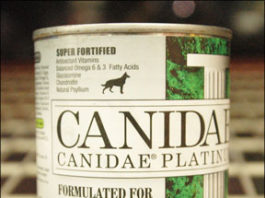29 Dog Breeds Predisposed to Hypothyroidism
These 29 dog breeds are the top most inclined to develop hypothyroidism as they age.
Home Treatment for Parvo May Prevent “Economic Euthanasia”
When experienced breeder Barbara Sorg noticed that Winks, one of her five 8-week-old puppies, was listless, not eating, and by nightfall was suffering from diarrhea, she hustled him off to her long-time veterinarian the next morning, a Tuesday.??The vet suspected that Winks had not tolerated the dewormer he'd been given Sunday. Although he had never left her property and had no suspected exposure, Sorg asked that he be tested for deadly parvovirus; her veterinarian discounted the possibility.
Help Manage Your Dog’s Diabetes Through Proper Diet
There is no single “best” diet for dogs with diabetes. Most diabetic dogs do fine on a diet formulated for adult maintenance. And most do not require a high-fiber prescription diet. However, it is important to maintain consistent carbohydrate levels, and a diet moderately low in fat may be safest. The nutritional needs of any concurrent disease should take precedence.Dogs with diabetes can thrive on diets that are dry or canned, prescription, frozen raw, home-prepared (cooked or raw), and combinations of any of these. See the samples below (starting with “Prescription Diets”) for a variety of diets that have worked well for diabetic dogs and their caregivers. We’ll say it again: There is no single “best” diet for dogs with diabetes. Most diabetic dogs do fine on a diet formulated for adult maintenance. And most do not require a high-fiber prescription diet.
Canine Glandular or Organ Therapy
The premise seems simple - if your dog has liver problems, feed him liver. What if it's a kidney, thyroid, or adrenal problem? Then feed kidney, thyroid, or adrenal tissue. This is, in its simplest form, glandular or organ therapy. The process has become much more refined over the years. Now your dog can experience the benefits of glandular therapy even when you can't find the raw glands or other organs to feed him. Now, glandulars (the common term for products containing animal cells even if they aren't from glands) are available in tablet, capsule, and liquid form, depending on the manufacturer.
Symptoms of Addison’s Disease
The signs of this potentially fatal condition mimic those of many other diseases. Treatment can be complex and expensive. Holistic medicine can help. Addison’s disease is the common name for hypoadrenocorticism, or adrenal insufficiency. The adrenal glands do not produce enough, if any, of a number of hormones, including aldosterone, which maintains sodium and potassium levels to regulate blood pressure (among other important functions), and cortisol, which helps the body metabolize glucose and deal effectively with physical and mental stresses of all kinds.
A Healthy Pancreas for Canine Diabetes Prevention
The pancreas is an elongated gland, light tan or pinkish in color, nestled alongside the small intestine and adjacent to the stomach. The organ is composed of two functionally separate types of glandular tissue, each which performs a vital and disparate role in the dog's body.
Iatrogenic and Pseudo-Cushing’s in Dogs
A very small percentage of Cushing's cases result from medical treatments for other conditions, such as the use of prednisone or other corticosteroid medications to control allergies, arthritis, or autoimmune conditions. This is called iatrogenic" (doctor-caused) Cushing's. In these cases
Causes of Canine Conjunctivitis and Treatment Options
Something is wrong with your dog’s eye. It’s bright red or oozing pus or itching like crazy. Could it be pink eye? This common childhood condition, also known as red eye or conjunctivitis, affects people, cats, and our canine companions. Conjunctivitis is an inflammation of the conjunctiva, the tissue covering the eye and inner surface of the eyelid. If caused by bacteria or viruses, it can be infectious. Noninfectious conjunctivitis can be caused by allergic reactions, irritants, or trauma injuries.
Addison’s Disease; Adding “Real” Foods; Canned Plants
Thank you so much for the recent article published about Addison’s disease in dogs. The day I read it my dog Hayleigh was showing almost every symptom, some she’s had on and off for years. The final clue was the frequent urination, which had started the day before. Because I read the article prior to taking her to the vet I knew to ask for the ACTH test in addition to the urine sample, which came back positive for primary Addison’s.
Fighting Cases of Heartworm in Dogs
Heartworms are horrible. No arguments there. Anyone who has ever known or had an infected dog knows how slowly but surely the parasites can sap the animal’s strength and vitality. Going through the treatment to kill the heartworm is no walk in the park either. The “cure” is quite capable of killing the dog in the process of trying to save its life. But some people just don’t like the idea of giving the dog the chemical preventatives that can keep the pooch safe from infestation. And some dogs are sensitive to the drugs, reacting to each dose with vomiting, diarrhea, and other symptoms.
Diagnosing and Treatment Options for Symmetrical Lupoid Onychodystrophy or SLO
Dog nails aren’t supposed to fall off, thought first-time dog owner Terrie Huberman some 18 months ago. That’s when she first realized that finding one of her Pug-Poodle mix’s nails on the floor of her Sherman Oaks, California, apartment wasn’t an isolated incident. It all started when, after coming in from a walk, Terrie picked up what would turn out to be the keratin shell from one of Bonzo’s claws. At the time she thought it was something he’d tracked in from outside. Only later did she learn the shell was a telltale sign of Symmetrical Lupoid Onychodystrophy, SLO for short.
Properly Diagnosing Canine Hypothyroidism – What are the Signs?
You probably know someone with an underactive thyroid gland; in fact, you may have one yourself. The signs of hypothyroidism in humans include a subnormal body temperature, cold hands and feet, weight gain, hair loss, and constant fatigue. People aren’t the only ones afflicted by this disorder, for many dogs are hypothyroid, too. They may seem lethargic, gain weight while eating normal or below-normal amounts of food, seek warmth, and develop skin and coat conditions. But hypothyroidism causes other symptoms, too, and an accurate diagnosis can require thinking outside the box.















